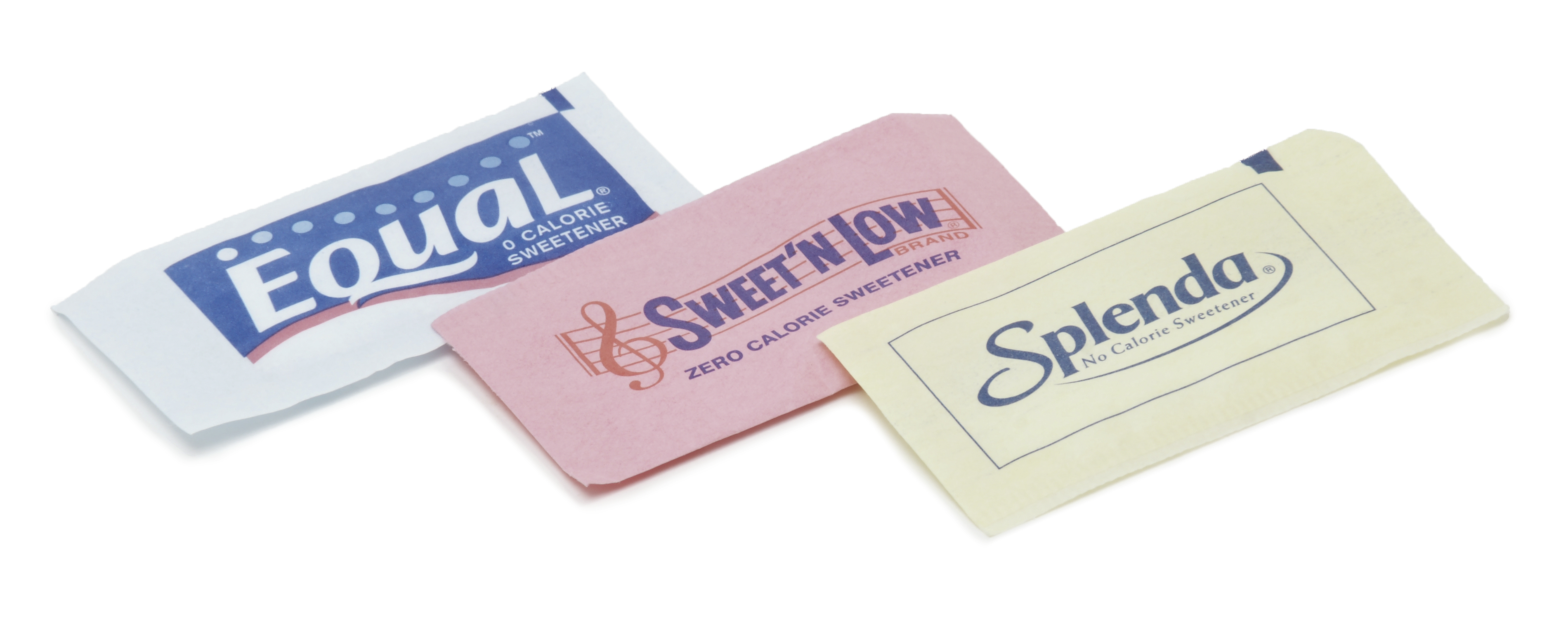|
Lugduname
Lugduname (from lat. ''Lugdunum'' for ''Lyon'') is one of the most potent sweetening agents known. Lugduname has been estimated to be between 220,000 and 300,000 times as sweet as sucrose (table sugar), with estimates varying between studies. It was developed at the University of Lyon, France in 1996. Lugduname is part of a family of potent sweeteners which contain acetic acid functional groups attached to guanidine. See also * Carrelame * Sucrononic acid Sucrononic acid is a guanidino derivative artificial sweetener. It is one of the most potent sweeteners known, with a sweetness 200,000 times that of sucrose (table sugar). It has not been approved for use in food. Sucrononic acid is an artific ... References External links * Sugar substitutes Guanidines Benzonitriles Benzodioxoles Anilines Amino acids {{Organic-compound-stub ... [...More Info...] [...Related Items...] OR: [Wikipedia] [Google] [Baidu] |
Carrelame
Carrelame is an extremely high potency artificial sweetener of the guanidine class, closely related to lugduname. While Carrelame is roughly 200,000x as sweet as sucrose, lugduname is still somewhat sweeter. It appears safe in pigs. See also * Sucrononic acid Additional reading * * * References Acetic acids Sugar substitutes Guanidines {{Organic-compound-stub ... [...More Info...] [...Related Items...] OR: [Wikipedia] [Google] [Baidu] |
Lugdunum
Lugdunum (also spelled Lugudunum, ; modern Lyon, France) was an important Roman city in Gaul, established on the current site of Lyon. The Roman city was founded in 43 BC by Lucius Munatius Plancus, but continued an existing Gallic settlement with a likely population of several thousands. It served as the capital of the Roman province of Gallia Lugdunensis and was an important city in the western half of the Roman Empire for centuries. Two emperors, Claudius and Caracalla, were born in Lugdunum. In the period 69–192 AD, the city's population may have numbered 50,000 to 100,000, and possibly up to 200,000 inhabitants. The original Roman city was situated west of the confluence of the Rhône and Saône, on the Fourvière heights. By the late centuries of the empire much of the population was located in the Saône River valley at the foot of Fourvière. Name The Roman city was founded as ''Colonia Copia Felix Munatia'', a name invoking prosperity and the blessing of t ... [...More Info...] [...Related Items...] OR: [Wikipedia] [Google] [Baidu] |
Lyon
Lyon,, ; Occitan: ''Lion'', hist. ''Lionés'' also spelled in English as Lyons, is the third-largest city and second-largest metropolitan area of France. It is located at the confluence of the rivers Rhône and Saône, to the northwest of the French Alps, southeast of Paris, north of Marseille, southwest of Geneva, northeast of Saint-Étienne. The City of Lyon proper had a population of 522,969 in 2019 within its small municipal territory of , but together with its suburbs and exurbs the Lyon metropolitan area had a population of 2,280,845 that same year, the second most populated in France. Lyon and 58 suburban municipalities have formed since 2015 the Metropolis of Lyon, a directly elected metropolitan authority now in charge of most urban issues, with a population of 1,411,571 in 2019. Lyon is the prefecture of the Auvergne-Rhône-Alpes region and seat of the Departmental Council of Rhône (whose jurisdiction, however, no longer extends over the Metropolis of Lyo ... [...More Info...] [...Related Items...] OR: [Wikipedia] [Google] [Baidu] |
Sucrose
Sucrose, a disaccharide, is a sugar composed of glucose and fructose subunits. It is produced naturally in plants and is the main constituent of white sugar. It has the molecular formula . For human consumption, sucrose is extracted and refined from either sugarcane or sugar beet. Sugar mills – typically located in tropical regions near where sugarcane is grown – crush the cane and produce raw sugar which is shipped to other factories for refining into pure sucrose. Sugar beet factories are located in temperate climates where the beet is grown, and process the beets directly into refined sugar. The sugar-refining process involves washing the raw sugar crystals before dissolving them into a sugar syrup which is filtered and then passed over carbon to remove any residual colour. The sugar syrup is then concentrated by boiling under a vacuum and crystallized as the final purification process to produce crystals of pure sucrose that are clear, odorless, and sweet. Suga ... [...More Info...] [...Related Items...] OR: [Wikipedia] [Google] [Baidu] |
University Of Lyon
The University of Lyon (french: Université de Lyon), located in Lyon and Saint-Étienne, France, is a center for higher education and research comprising 11 members and 24 associated institutions. The three main universities in this center are: Claude Bernard University Lyon 1, which focuses upon health and science studies and has approximately 27,000 students; Lumière University Lyon 2, which focuses upon the social sciences and arts, and has about 30,000 students; Jean Moulin University Lyon 3, which focuses upon the law and humanities with about 20,000 students. Members *Claude Bernard University Lyon 1 *Lumière University Lyon 2 *Jean Moulin University Lyon 3 *Jean Monnet University *École Normale Supérieure de Lyon *École centrale de Lyon * École nationale des travaux publics de l'État (ENTPE) *INSA Lyon *Institut d'études politiques de Lyon * VetAgro Sup (previously École Nationale Vétérinaire de Lyon) *École nationale d'ingénieurs de Saint-Étienne, ( ENIS ... [...More Info...] [...Related Items...] OR: [Wikipedia] [Google] [Baidu] |
Acetic Acid
Acetic acid , systematically named ethanoic acid , is an acidic, colourless liquid and organic compound with the chemical formula (also written as , , or ). Vinegar is at least 4% acetic acid by volume, making acetic acid the main component of vinegar apart from water and other trace elements. Acetic acid is the second simplest carboxylic acid (after formic acid). It is an important Reagent, chemical reagent and industrial chemical, used primarily in the production of cellulose acetate for photographic film, polyvinyl acetate for wood Adhesive, glue, and synthetic fibres and fabrics. In households, diluted acetic acid is often used in descaling agents. In the food industry, acetic acid is controlled by the E number, food additive code E260 as an acidity regulator and as a condiment. In biochemistry, the acetyl group, derived from acetic acid, is fundamental to all forms of life. When bound to coenzyme A, it is central to the metabolism of carbohydrates and fats. The global ... [...More Info...] [...Related Items...] OR: [Wikipedia] [Google] [Baidu] |
Guanidine
Guanidine is the compound with the formula HNC(NH2)2. It is a colourless solid that dissolves in polar solvents. It is a strong base that is used in the production of plastics and explosives. It is found in urine predominantly in patients experiencing renal failure. A guanidine moiety also appears in larger organic molecules, including on the side chain of arginine. Structure Guanidine can be thought of as a nitrogenous analogue of carbonic acid. That is, the C=O group in carbonic acid is replaced by a C=NH group, and each OH is replaced by a group. Isobutene can be seen as the carbon analogue in much the same way. A detailed crystallographic analysis of guanidine was elucidated 148 years after its first synthesis, despite the simplicity of the molecule. In 2013, the positions of the hydrogen atoms and their displacement parameters were accurately determined using single-crystal neutron diffraction. Production Guanidine can be obtained from natural sources, being first isolat ... [...More Info...] [...Related Items...] OR: [Wikipedia] [Google] [Baidu] |
ACS Combinatorial Science
''ACS Combinatorial Science'' (usually abbreviated as ''ACS Comb. Sci.''), formerly ''Journal of Combinatorial Chemistry'' (1999-2010), was a peer-reviewed scientific journal, published since 1999 by the American Chemical Society. ''ACS Combinatorial Science'' publishes articles, reviews, perspectives, accounts and reports in the field of Combinatorial Chemistry. ''JCS'' is currently indexed in: Chemical Abstracts Service (CAS), SCOPUS, EBSCOhost, PubMed, and Web of Science. Anthony Czarnik } Anthony W. Czarnik (born 1957) is an American chemist and inventor. He is best known for pioneering studies in the field of fluorescent Molecular sensor, chemosensors and co-founding Illumina, Inc., a biotechnology company in San Diego. Czarnik ... served the founding editor; he served as Editor from 1999-2010. M.G. Finn served as Editor from 2010-2020. In 2010, ACS agreed to change the name of the journal to ''"Combinatorial Science"'' and it was the first and only ACS journal to be devo ... [...More Info...] [...Related Items...] OR: [Wikipedia] [Google] [Baidu] |
Sucrononic Acid
Sucrononic acid is a guanidino derivative artificial sweetener. It is one of the most potent sweeteners known, with a sweetness 200,000 times that of sucrose (table sugar). It has not been approved for use in food. Sucrononic acid is an artificial compound which is part of the family of guanilic acids, guanidines combined with acetic acid, which are very sweet: *Lugduname (230,000x at equivalent concentration) *Carrelame Carrelame is an extremely high potency artificial sweetener of the guanidine class, closely related to lugduname. While Carrelame is roughly 200,000x as sweet as sucrose, lugduname is still somewhat sweeter. It appears safe in pigs. See also * Su ... (200,000x at equivalent concentration) * Bernardame (188,000x at equivalent concentration) * Sucrooctate (162,000x at equivalent concentration) See also * C19H26N4O2 References External links *{{Commonscatinline Sugar substitutes Guanidines Nitriles Zwitterions ... [...More Info...] [...Related Items...] OR: [Wikipedia] [Google] [Baidu] |
Sugar Substitutes
A sugar substitute is a food additive that provides a sweetness like that of sugar while containing significantly less food energy than sugar-based sweeteners, making it a zero-calorie () or low-calorie sweetener. Artificial sweeteners may be derived through manufacturing of plant extracts or processed by chemical synthesis. Sugar substitute products are commercially available in various forms, such as small pills, powders, and packets. In North America, common sugar substitutes include aspartame, monk fruit extract, saccharin, sucralose, and stevia; cyclamate is also used outside the United States. These sweeteners are a fundamental ingredient in diet drinks to sweeten them without adding calories. Additionally, sugar alcohols such as erythritol, xylitol, and sorbitol are derived from sugars. Approved artificial sweeteners do not cause cancer. Reviews and dietetic professionals have concluded that moderate use of non-nutritive sweeteners as a safe replacement for sugars can ... [...More Info...] [...Related Items...] OR: [Wikipedia] [Google] [Baidu] |
Guanidines
Guanidine is the compound with the formula HNC(NH2)2. It is a colourless solid that dissolves in polar solvents. It is a strong base that is used in the production of plastics and explosives. It is found in urine predominantly in patients experiencing renal failure. A guanidine moiety also appears in larger organic molecules, including on the side chain of arginine. Structure Guanidine can be thought of as a nitrogenous analogue of carbonic acid. That is, the C=O group in carbonic acid is replaced by a C=NH group, and each OH is replaced by a group. Isobutene can be seen as the carbon analogue in much the same way. A detailed crystallographic analysis of guanidine was elucidated 148 years after its first synthesis, despite the simplicity of the molecule. In 2013, the positions of the hydrogen atoms and their displacement parameters were accurately determined using single-crystal neutron diffraction. Production Guanidine can be obtained from natural sources, being first isolat ... [...More Info...] [...Related Items...] OR: [Wikipedia] [Google] [Baidu] |

.jpg)


